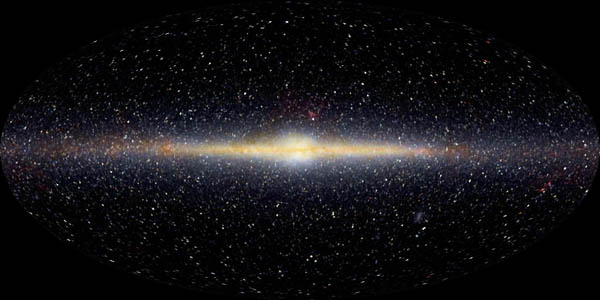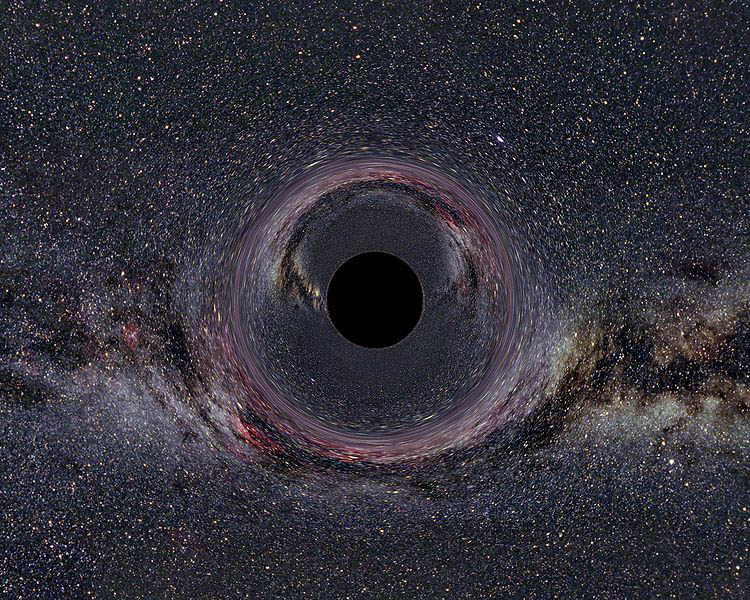

IMO, Black Holes may hold the answers to the riddle of the puzzle of who, what, where, when, and why things in our Universe are the way they are. Literally. Well, almost. (Who?)
[Note: The following is NOT an astronomy course but simply very basic essential information necessary to lay the foundation of how our Earth became Earth.]
Scientist now know a Black Hole — a 3D cavity in space — exist in the core of our Milky Way galaxy, and that Black Holes exist in the middle of every major, if not all galaxies in the Universe!
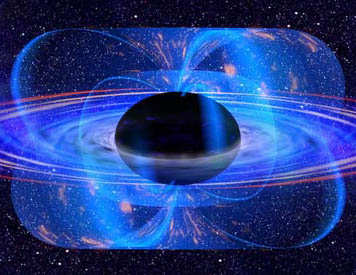
What is a Black Hole?
A black hole is a region in space where the gravitational field is so powerful that nothing, including light and X-rays can escape its pull. In the middle of this region is an object with a mass so compact that its gravitational force is so powerful that it prevents anything from escaping its deadly grasp.
Astronomers have categorized black holes into two types: (1) stellar-mass (2) supermassive.
(1) "stellar-mass" black hole is several times (25x +?) heavier than our Sun (do not confuse "heavier" with "size.") and that they are only about 20 miles wide.
(2) "supermassive" black hole can be 1,000,000 (1 million) to 1,000,000,000 (1 billion) times more massive than our Sun, which is equivalent to something like a small galaxy.
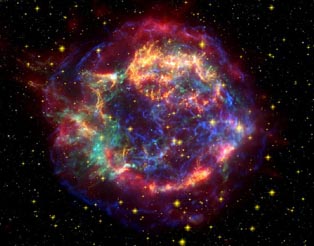 |
 |
Cassiopeia A |
Antennae Galaxy |
This is a false color image (multiple images) of a supernova that will become a "stellar-mass" black hole in time. |
A supermassive black hole in the making with the collision of a pair of galaxies, which contribute to the growth of a "supermassive" black hole. |
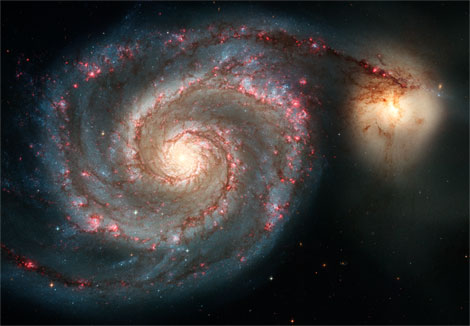
"Supermassive" black holes function like deep, galactic whirlpools, trapping all matter within their gravitational reach from all directions, including light, pulling everything to the center of the galaxy. The swirling matter is then swallowed by the black hole down to a single point in the center of its throat called, "central singularity."
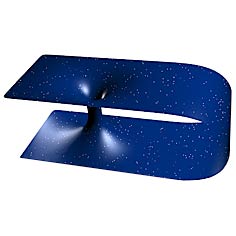
What causes a Black Hole?
Throughout the life of a healthy star, its own inward gravity is balanced by the outward pressure of the nuclear fusion* that is occurring in its center. When the star's nuclear fuel (hydrogen) is eventually spent, the star's life comes to an end, and this is when things change.
*Fusion inside a star squeezes hydrogen (H) atoms in the star's core so tightly they fuse into helium (He), which generates light and heat and exerts outward pressure so the core can withstand the enormous pressure of the outer layers.
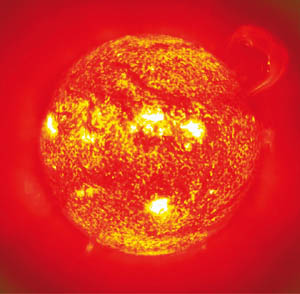 |
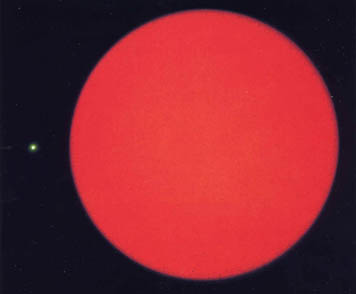 |
Our healthy Sun today — a nuclear furnace of heat and light —t |
Our Sun as a Red Giant in the future — the star to the left is our Sun today — |
From the outside, the star swells, brightens, and cools, becoming a RED GIANT, but inside, the star's interior is unable to withstand the compression force of its own gravity and the star collapses into a stellar remnant.
If the star is less than 8x heavier than Earth, it dies a relatively peaceful death; however, heavier, "massive" stars greater than 25x heavier than our Sun explode into a spectacular supernova.
 |
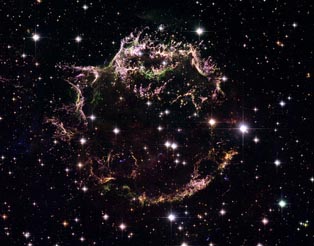 |
Cassiopeia A |
Cassiopeia A (Hubble photo) |
| False color image of the remnant of a supernova explosion of a star 11,300 years ago located 11,000 light years from Earth. | The remnant of a supernova explosion (same image as the image on the left). This remnant will eventually become a "stellar-mass" black hole. |
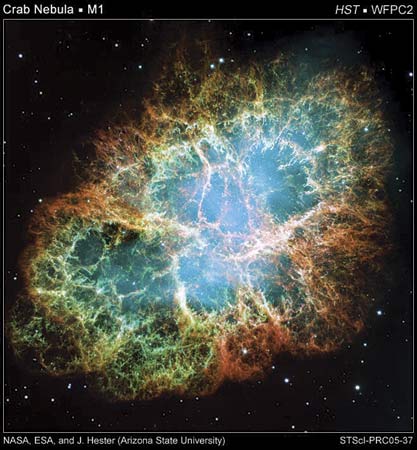 |
Crab Nebula Supernova Composite of multiple images from the Hubble Space Telescope |
The Supernova Event
A supernova is a stellar explosion — the violent death of a star. When a massive stars dies, gravity causes the star's core to collapse in on itself at tremendous velocity, resulting in a rapid increase in temperature and density.
When the star's core has consumed all of the star's hydrogen, gravity compresses it. The shrinking core temperature rises to ~1 million degrees (~1,000,000°F).
The "massive" star explodes and expels its material** out into space; the subsequent shockwave sweeps up an expanding shell of gas and dust known as a supernova remnant.
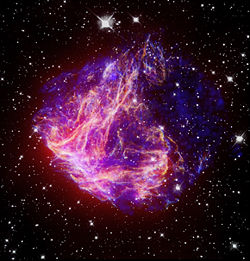 |
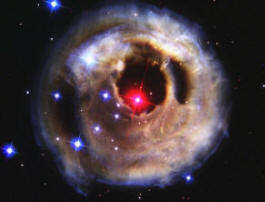 |
Supernovae Remnant |
**Note: Inside the star, carbon, oxygen, silicon, iron, and every atom heavier than hydrogen and helium is strewn across the universe when the star explodes. These things make up our Earth. Remember this.
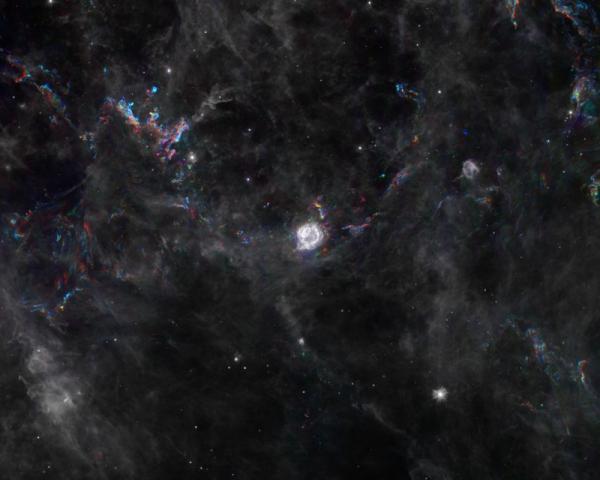
After the supernova event, what remains is a burnt out stellar corpse, a small, super dense core with a mass so massive the corpse has no outward force to oppose the gravitational forces, and so it collapses in on itself to a point of zero volume and infinite density called, "singularity."
It is this point of "singularity" that becomes a "Black Hole."
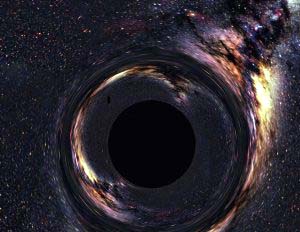
Where are Black Holes?
Astronomers now know most, if not all galaxies harbor a "supermassive" black hole in their center. Although they cannot see them, they know they are there because they can measure the visible light, x-rays and radio waves emitted by the material around them.
For instance, in 2002, astronomers were able to measure the speed and size of the orbit of stars that orbited perilously close to the center of the Milky Way galaxy. They found the stars' top speed was 3% of the speed of light — about 20 million miles per hour — an incredible speed for a globe of mass larger than our sun. This convinced everyone, including the skeptics, that a supermassive black hole was responsible.
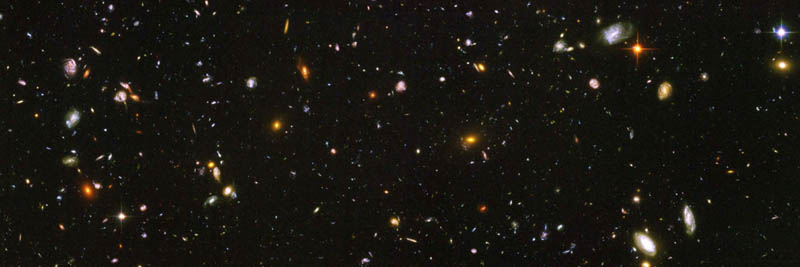
In the just region of the universe visible to Earth, there are about 100 billion galaxies, which means there are about 100 billion supermassive Black Holes out there.
If each galaxy has about 100 million stellar-mass black holes, which is belief of astronomers today, if you do the math, that means there are about 200 BILLION Black Holes out there! (100 billion "supermassive" + 100 billion "stellar-mass" black holes.) And that is just in our visible region of the Universe!!
NOTE: It is said, somewhere out there a new stellar-mass black hole is born in a supernova every second. And there are probably many more black holes out there between the size of stellar-mass and super-massive. Again, do the math. That's a lot of black holes out there. Perhaps a better way to visualize it is to ask, "How many grains of sand are on the beach?"
Black Holes must serve a very important and significant role/purpose in our Universe. Their existence and function cannot be ignored or denied. They are many; they are everywhere; and they interact with every galaxy in the Universe.

What happens to all the "stuff" that is sucked into the Black Hole?
Excellent question! Ask quantum mechanics and the unifying theory of quantum gravity.
How quantum gravity works is still unknown, but what we do know is that black holes are like 3-dimensional sinkholes, or cosmic drains, and all matter that is pulled down into their black abyss has to go somewhere or be converted into some kind of energy (ie. Quasars).
Some theorize the "central singularity" is a bridge or porthole / wormhole into another Universe. Great theory, but unfortunately, the data isn't there yet. So, although we do not know if these wormhole things exist, what we do know is that we have observed black holes to exist and we understand how they form.
How do Black Holes form?
The chronological evolution of a black hole goes something like this:
1. The WMAP satellite, remember that? photographed what appear to be "seeds" in our very early universe.
2. Those "seeds" most likely formed massive stars 10s - 1000s of times the mass of our sun becoming massive stars.
3. These massive stars grew exponentially during the frenzy feeding epoch when there was a lot of "stuff" in the neighborhood and galaxies were close together and colliding into each other more frequently.
Note: During these galactic collisions, some stars were catapulted into deep space.
4. The massive stars eventually became supernova explosions, which formed the "stellar-mass" black holes.
5. These "stellar-mass" black holes grew into "supermassive" black holes by consuming nearby stars and gas over the course of billions of years and/or merged with other black holes and/or collided with other galaxies (ie. Antennae).
6. The "supermassive" black holes' gravity eventually formed the galaxies we see today.
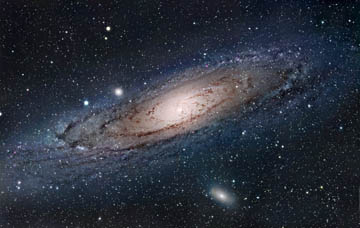 |
Andromeda Galaxy (M31) |
The Milky Way Galaxy
80 years ago, the Milky Way was believed to be the center of the universe. Today we know the Milky Way galaxy is not the center of the Universe but simply one of billions of galaxies in the observable universe.
The Milky Way galaxy is believed to be approximately 100,000 light years in diameter, and recent observations indicate the gaseous disk is about 12,000 light years thick, which is much thicker than previous thought (~1,000 light years.)
Additionally, recent measurements by the Very Long Baseline Array (VLBA) have revealed the Milky Way to be much larger than previously thought. It is now considered to be roughly the size of our local neighbor, the Andromeda Galaxy (see Andromeda M31 photo above.)
Newer and more accurate measurements of the rotational speed of the Milky Way galaxy also clock the galaxy's rotational speed at about 914,000 km per hour, significantly faster than 792,000 km per hour as previously thought. This new information implies the total mass of the Milky Way galaxy to be around three (3) trillion stars, NOT 200-400 billion as previously thought.
I doubt any of this new information has found its way into academia yet (by way of text books anyway.)
There also appears to be some discrepancy regarding the size of the Milky Way. If the size of the galactic disk (bulge) is believed to be between 70,000 and 100,000 light years in diameter, how can the entire galaxy be 100,000 light years in diameter?
Consider this:
"In 2005, astronomers used the Keck telescopes to show that the tenuous sprinkle of stars extending outward from the galaxy is actually part of the main disk itself. This means that the spiral disk of stars in Andromeda is three times larger in diameter than previously estimated. This constitutes evidence that there is a vast, extended stellar disk that makes the galaxy more than 220,000 light-years in diameter. Previously, estimates of Andromeda's size ranged from 70,000 to 120,000 light-years across." — Wikipedia
Given the above statement to be true, and the Milky Way galaxy is believed to be about the same size as the Andromeda galaxy, then our Milky Way galaxy must be larger than 100,000 light years in diameter.
Regardless, for our purpose here, size is not important ;-) Our focal point (pun intended) is on the black hole that resides in the galactic center of the Milky Way.
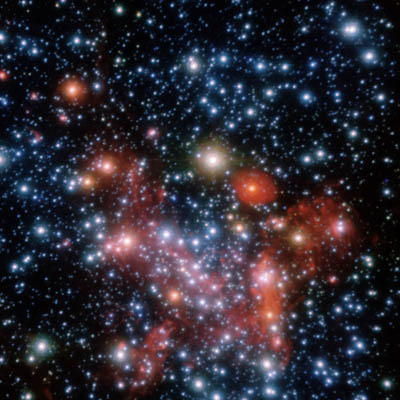 |
Galactic Center of the Milky Way |
Calculations indicate the black hole in the center of the Milky Way is three (3) million times more massive than our Sun. Three (3) million more massive than our Sun.
How large is three (3) million times more massive? Study the image below.
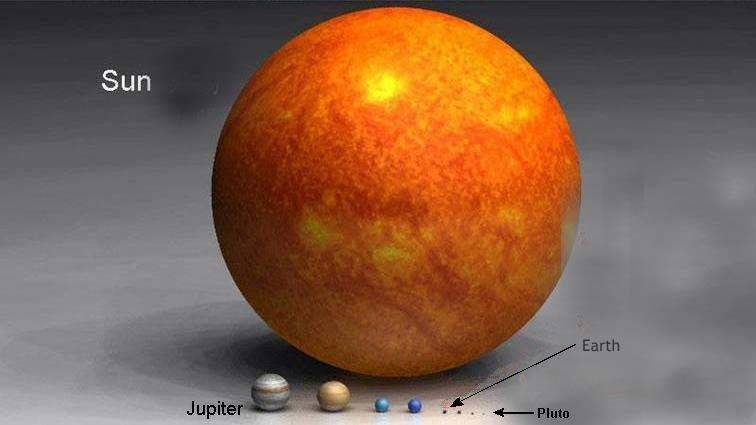
Now multiply the size of the Sun by three (3) million and you will get an idea of the SIZE of the Milky Way's BLACK HOLE ... to the size of Earth!
